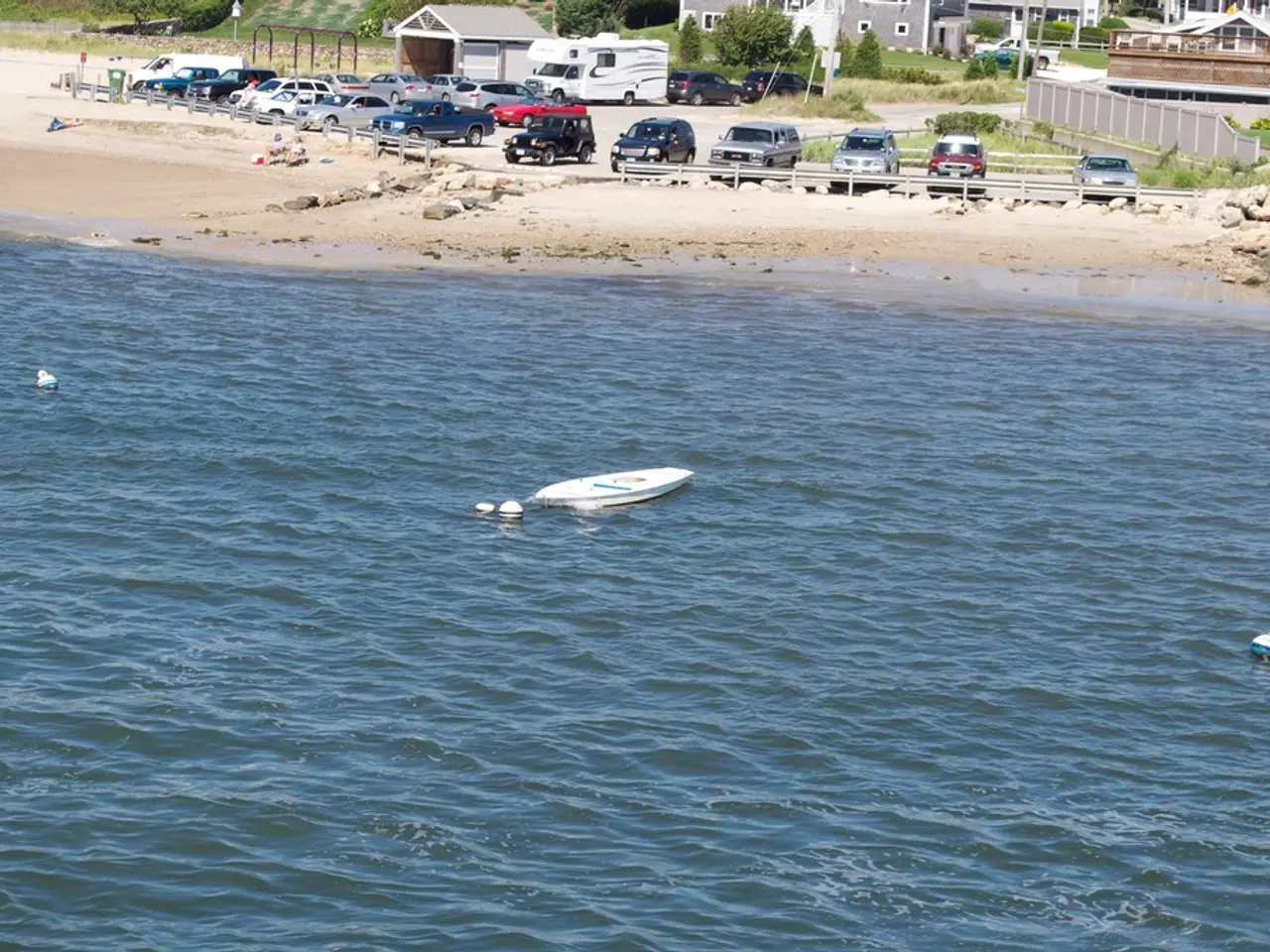Leveraging Marine Economy for Sustainable Development in Đông Tháp
Đồng Tháp Province Pursues Maritime Economic Development
Đồng Tháp Province, located in the Mekong Delta, is embarking on an ambitious plan to develop its maritime economy. The province's strategy focuses on key sectors such as aquaculture, fisheries, eco-tourism, industry, and seaports, with a focus on sustainable growth and modernization.
Aquaculture and Fisheries
Aquaculture and fisheries are at the heart of Đồng Tháp's maritime development. The province boasts over 2,300 hectares for clam farming and nearly 4,000 hectares for shrimp, yielding around 16,000 tonnes of shrimp and 15,000-17,000 tonnes of clams each year, primarily for export. The coastal communes of Tân Điền, Tân Phú Đông, and Gò Công Đông are expanding prawn cultivation, while clam farming provides employment for about 100,000 workers in the area.
To ensure the quality and sustainability of its aquaculture products, Đồng Tháp is investing in advanced scientific and technological methods for aquaculture and seafood processing. This includes establishing high-tech prawn farming zones and developing sustainable, community-based clam farming models. The province is also intensifying disease control and quarantine efforts, particularly for shrimp farming in the Đồng Tháp Muối region.
Eco-tourism and Coastal Development
Đồng Tháp is aiming to expand tourism and maritime services as part of its marine economy breakthrough by 2030. The province is developing ecological urban areas and enhancing coastal infrastructure to support eco-tourism potential alongside industrial growth.
Industry and Industrial Clusters
The province is focusing investment in industrial clusters such as Soài Rạp Industrial Park and Gia Thuận 1 and 2 Clusters. These clusters promote a shift from traditional agriculture towards modern industry and services. Key projects include petroleum service industrial parks and associated infrastructure to support energy and mechanical engineering sectors.
Seaports and Logistics
Investment is concentrated on developing seaports and logistics hubs along the Soài Rạp River, including Go Công Wharf and Go Công General Port. The province is leveraging its 9.5 km coastal road to connect inter-regional infrastructure and attract dynamic projects like petroleum and liquefied gas depots, forming an integrated industrial-service ecosystem.
Sustainable and Green Maritime Ports
Vietnam's overall green port strategy, with about US$13 billion mobilized till 2030, encourages low-interest credits and tax incentives for ports adopting eco-friendly infrastructure. Although more national in scope, Đồng Tháp benefits indirectly as part of the national maritime framework encouraging green development and international investment.
Infrastructure and Connectivity
Connectivity improvements, such as the completion of key technical infrastructure and strategic transport projects like the Rạch Miễu 2 Bridge, underpin Đồng Tháp’s maritime economic zone development. These infrastructure upgrades facilitate investment, logistics efficiency, and socio-economic growth in the entire Mekong Delta, including Đồng Tháp.
Attracting Investment
Đồng Tháp is seeking to attract investment in key sectors such as seaports, logistics, processing, and mechanical engineering. The development of industrial clusters and seaports, along with the attraction of investment, play a vital role in socio-economic progress, creating jobs for thousands of local workers and promoting a structural shift from agriculture to industry and services.
Examples of Success
Farmers in the 350-hectare clam farming zone in Gò Công Đông are earning VNĐ300-400 million (US$11,500-15,300) per hectare this year. Clams from Gò Công Đông were awarded Aquaculture Stewardship Council certification in 2023, enabling them to be sold to demanding markets such as Europe and Japan.
In conclusion, Đồng Tháp is fostering a multi-sectoral maritime economy by investing in high-tech aquaculture, promoting coastal eco-tourism, building industrial clusters especially in petroleum and logistics, and enhancing seaport infrastructure to create a sustainable coastal economic zone integrated into regional and national economic corridors. This comprehensive approach supports job creation, economic restructuring, and alignment with Vietnam’s broader maritime development goals by 2030. The province is aiming to transform its eastern coastal region into a dynamic economic zone for maritime economic development.
- The development of the maritime economy in Đồng Tháp Province also extends to the culture and lifestyle sectors, with a focus on preserving local heritage and promoting Mekong Delta cuisine in restaurant and food-and-drink establishments along the coast.
- To further boost its maritime economy, Đồng Tháap's strategy includes fostering partnerships with AI technology companies, leveraging AI advancements in aquaculture management, disease control, and logistics optimization.
- Successful implementation of Đồng Tháp's maritime economic development plan could positively impact the environment, as sustainable farming practices and eco-tourism initiatives contribute to preserving the Mekong Delta's biodiversity.
- The maritime economic development in Đồng Tháp emphasizes fair labor practices and prioritizing the well-being of workers, especially in the aquaculture and eco-tourism sectors, as essential contributions to the sustainable growth of the region's economy.
- Despite the promising future of Đồng Tháp's maritime economic development, concerns about climate change, rising sea levels, and potential conflicts with neighboring countries due to resource extraction or territorial disputes must be carefully addressed to maintain stability and security in the region.
- The provincial government is dedicated to strengthening finance and investment in the maritime development initiatives through public-private partnerships, grants, and subsidies, seeking a balance between short-term growth and long-term sustainability.
- Home-and-garden businesses in Đồng Tháp have the opportunity to thrive alongside the maritime economy, as the growth in infrastructure development and tourism could lead to increased demand for furnishings, decor, and landscaping services catering to both locals and visitors.




